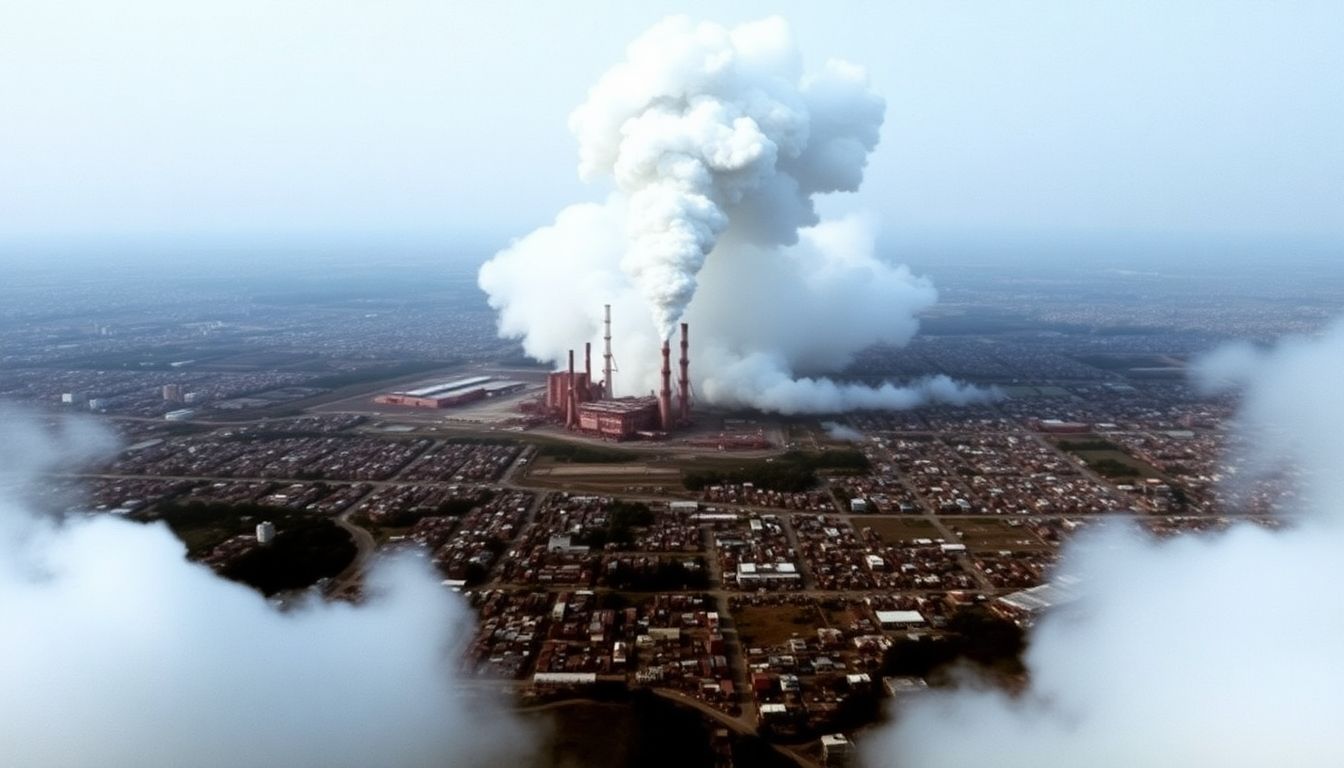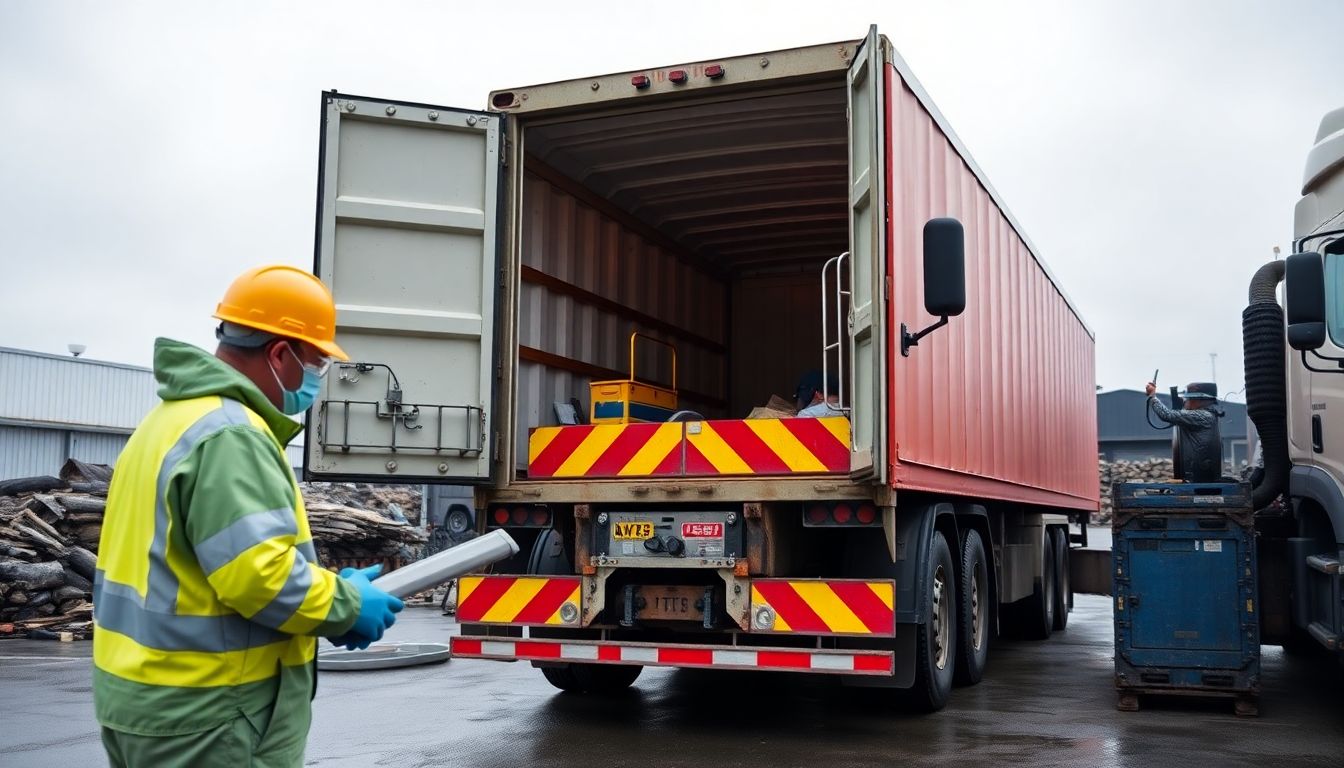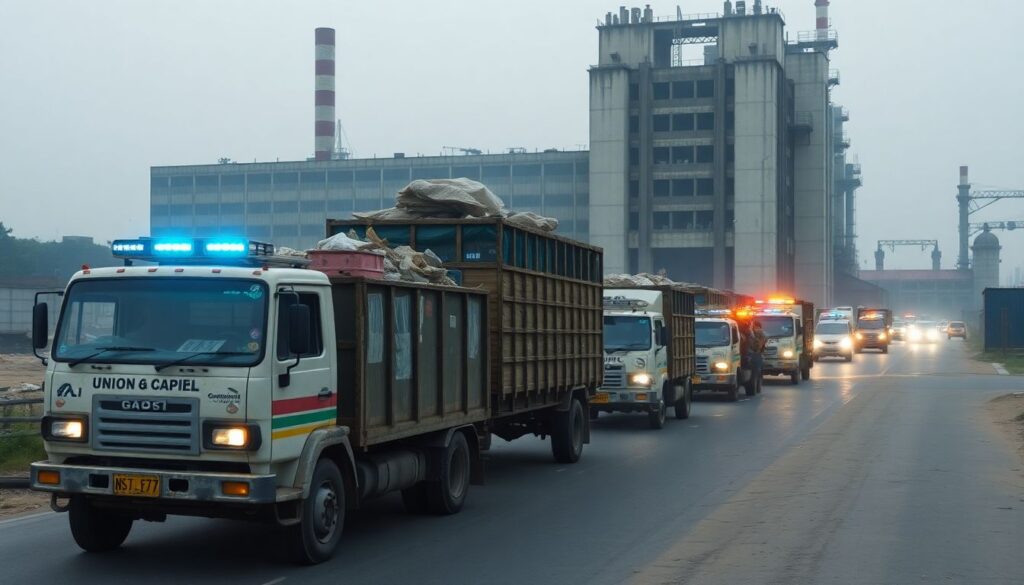Welcome to our in-depth exploration of a significant milestone in the aftermath of one of the world’s worst industrial disasters. Join us as we delve into the recent developments in Bhopal, India, where the long-awaited cleanup of the Union Carbide plant has finally begun. This journey is filled with history, hope, and the resilience of a community that has waited decades for justice and environmental restoration.
Forty years after the Bhopal gas tragedy, India completes the clean-up operation of the Union Carbide plant.
Imagine a stark, haunting scene unfolding before your eyes. A convoy of trucks, like monstrous metal beasts, rolls through the deserted streets of Bhopal. Their cargo is not your everyday goods, but the deadly legacy of an industrial catastrophe – hazardous waste from the infamous Union Carbide plant. Each truck is a moving hazard, a potential disaster concealed within its rusty walls, a chilling reminder of a night that Bhopal can never forget.
Escorting the convoy is a fleet of emergency vehicles, their lights flashing like grim beacons in the night. They are the thin line between order and chaos, a modern-day cavalry ready to spring into action should the worst happen. Alongside them, security personnel move with the precision of a military unit, their faces etched with determination, their eyes constantly scanning the horizon for any sign of trouble.
Looming in the background is the derelict Union Carbide factory, a ghostly silhouette against the moonlit sky. Its towers and chimneys, once symbols of industrial progress, now stand as eerie monuments to a tragedy that claimed thousands of lives. The factory, long abandoned, serves as a stark reminder of the price paid for unchecked industrialization, its crumbling walls echoing with the whispers of a city’s collective grief and resilience.

The Bhopal Tragedy: A Flashback
On the fateful night of December 3, 1984, the industrial city of Bhopal, India, witnessed one of the world’s most catastrophic industrial disasters. Known as the Bhopal gas tragedy, the event occurred at the Union Carbide India Limited (UCIL) pesticide plant, a subsidiary of the U.S. multinational Union Carbide Corporation (UCC). The disaster was caused by a gas leak at the plant, which released around 40 tons of methyl isocyanate (MIC) gas, a highly toxic and reactive chemical used in the production of pesticides. The primary cause of the leak was a combination of poor maintenance, cost-cutting measures, and substandard safety procedures. Additionally, the plant’s location in a densely populated area exacerbated the immediate impact on the community.
The immediate impacts of the Bhopal gas tragedy were devastating. The toxic MIC gas quickly spread to the nearby shantytowns, exposing more than 500,000 people to the deadly chemical. The official immediate death toll was estimated to be around 2,259 people, and it is believed that at least 3,000 people died within the first few weeks. The government reported that around 150,000 survivors were left with varying degrees of disabilities. The catastrophe led to a public health crisis, with hospitals overwhelmed by the sheer number of patients suffering from respiratory problems, eye irritation, and other health issues. The disaster also resulted in widespread panic and chaos, as residents fled the area in a desperate attempt to escape the toxic fumes.
The long-term effects of the Bhopal gas tragedy on the community have been profound and enduring. Survivors continue to suffer from a range of health issues, including:
- Chronic respiratory diseases
- Neurological disorders
- Reproductive health problems
- Birth defects in children born to exposed parents
- Psychological trauma
The environmental impact has also been significant. The abandoned UCIL plant site continues to contaminate the surrounding soil and groundwater with toxic chemicals, leading to long-term environmental degradation. The long-term effects on the community and environment serve as a stark reminder of the enduring legacy of the Bhopal gas tragedy and the importance of holding responsible parties accountable for such disasters.

The Clean-up Operation: A Monumental Task
In a monumental effort to restore and preserve the environment, Indian authorities recently embarked on a massive clean-up operation. The mission? To safely dispose of hazardous waste that had been lingering in Bhopal for decades. This wasn’t just any clean-up; it was a testament to the government’s commitment to environmental remediation and public safety. The preparations were meticulous, involving months of planning and coordination among various departments.
Before the operation kicked off, stringent precautions were put in place to ensure the safety of both the team and the public. Here’s a glimpse into the preparations:
- Extensive training sessions were conducted for the personnel involved in handling and transporting the hazardous waste.
- Specialised equipment, including sealed containers and protective gear, was procured to manage the waste safely.
- A detailed route plan was chalked out, with emergency response teams stationed along the way to tackle any unforeseen situations.
The journey from Bhopal to Pithampur was a spectacle in itself. A heavily guarded convoy, consisting of 45 trucks laden with hazardous waste, embarked on the 250-kilometer journey. The convoy was escorted by a fleet of police vehicles, an ambulance, and a quick response team, ensuring that every mile was traversed with utmost caution. The journey was slow and steady, with the convoy maintaining a speed of 30 kilometers per hour to avoid any mishaps.
The operation was a resounding success, with the waste being safely disposed of at the treatment, storage, and disposal facility in Pithampur. This clean-up operation is not just a shining example of the authorities’ dedication to environmental conservation but also a beacon of hope for a cleaner, greener future. It stands as a testament to what can be achieved with careful planning, rigorous safety measures, and unwavering commitment.

The Aftermath: Compensation and Legal Battles
The 1984 Bhopal gas tragedy, one of the world’s worst industrial disasters, left a trail of devastation that continues to haunt survivors to this day. Union Carbide, the company responsible for the leak, paid a compensation of $470 million in 1989, a figure that many activists and survivors deemed insufficient given the magnitude of the catastrophe. This compensation was part of a settlement reached with the Indian government, but it did little to address the long-term health and environmental impacts.
The legal battles fought by the survivors have been arduous and prolonged. Efforts to hold Union Carbide and its parent company, Dow Chemical, accountable have spanned decades. Activists have argued that the compensation paid was woefully inadequate and that the companies should be held liable for the ongoing environmental remediation and health care costs. Despite numerous appeals and petitions, justice has been slow and elusive, leaving many survivors feeling abandoned and frustrated.
One of the most contentious issues has been the removal of hazardous waste from the Union Carbide plant site. For years, the toxic waste remained untouched, posing a continuous threat to the local community. In a long-awaited development, the Madhya Pradesh government recently initiated the removal of this waste, a process that activists and survivors have been demanding for decades. This move has been hailed as a significant step forward, albeit one that comes far too late for many.
The views of activists and survivors on these recent developments are mixed. While there is a sense of relief that the hazardous waste is finally being addressed, there is also a deep-seated bitterness over the delayed response. Many feel that the compensation and legal battles have been marred by injustice and corporate evasion. As one activist put it, “The removal of waste is a start, but it’s not enough. We need comprehensive health care, environmental restoration, and true accountability from those responsible.” Survivors continue to call for more robust action and a commitment to ensuring that such a tragedy never happens again.

The Road Ahead: Hope and Skepticism
In the heart of the bustling city, the announcement of the clean-up operation sparked a mix of emotions among the local community and activists. The neighborhood, long plagued by industrial waste, was ready for a change. Residents expressed a palpable sense of hope that the clean-up would bring a much-needed facelift to their community. Local activists, who had been advocating for this moment for years, saw it as a hard-won victory. The promise of transformed public spaces, safer playgrounds, and revitalized local parks ignited a renewed spirit within the community.
However, the initial enthusiasm was tempered with a healthy dose of skepticism. Long-time residents and environmental activists alike raised questions about the chosen incineration process. Concerns were voiced over the potential release of harmful pollutants into the air. Community meetings became heated debates, with some arguing that the incineration method, while expedient, might be a case of trading one environmental problem for another. The skepticism was fueled by past experiences with industrial projects that had left a legacy of pollution and broken promises.
At the core of the debate were the potential long-term impacts of the incineration process. Environmental groups presented studies outlining the risks:
- Release of dioxins and furans, known carcinogens, into the atmosphere.
- Contamination of soil and water resources with heavy metals and other toxic byproducts.
- Potential health impacts on residents, including respiratory issues and increased cancer risks.
These concerns were not merely academic; they struck at the heart of the community’s well-being and future.
Despite the divergent views, the clean-up operation served as a catalyst for deeper engagement between the local community, activists, and city officials. Public forums and workshops became platforms for dialogue and education. Residents demanded transparency and accountability, pushing for regular updates on air quality and health monitoring. Activists advocated for stricter regulations and the exploration of alternative, greener technologies for future clean-up efforts. The collective hope was that this operation would not only clean up the past but also pave the way for a sustainable and healthy future for the community.
FAQ
What caused the Bhopal gas tragedy?
What are the long-term effects of the Bhopal gas tragedy?
What was the compensation paid by Union Carbide?
What are the concerns raised by activists about the clean-up operation?
What are the steps taken by the Indian authorities to ensure the safe disposal of the hazardous waste?
- Prepared leak-proof, fire-resistant trucks to carry the hazardous waste.
- Escorted the convoy with emergency vehicles and security personnel.
- Conducted tests to ensure emission standards from burning the waste were in accordance with national standards.









